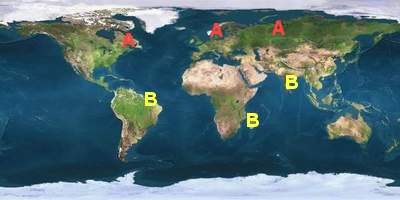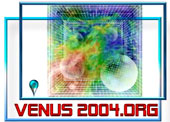|
|
Venus2004.org
> News
It is very important to use measurements taken by observers located at different north-south latitudes and if possible, in opposite hemispheres. An observer situated in Paris and another in Berlin will not be far enough apart for the measurements. The north-south distance must therefore be as large as possible and the longitudes must be rather close ( a good example would be Norway-South Africa ).  Map of observers' localizations The measurements taken by the A observers will have to be used with those taken by the B observers with close longitudes. There is no problem if the observer chooses to use two observation methods. The measurements taken (regardless of the chosen method) must be sent from then on to our email. Registered individuals will receive different e-mails on this subject. The information will be analyzed and classified according to the selected method. Depending on the geographic situation, the venus2004.org team will use the data in such a manner that when calculations are made they bring as much precision as possible to the measurements of the astronomical unit. The results and the names of the participants as well as their countries of origin will be published as soon as possible. The averages, chronometrical, photographic and totals will also be posted. The Venus2004.org team will be sure to keep you informed of the events before and after the transit. We count on you and we thank you for this fantastic job that we will all do together for the benefit of the scientific community!  The logo of www.venus2004.org |
|
© 2003-2006 Futura-Sciences.com. All rights reserved.
Indexator - Comparateur de prix - Revue de Presse
